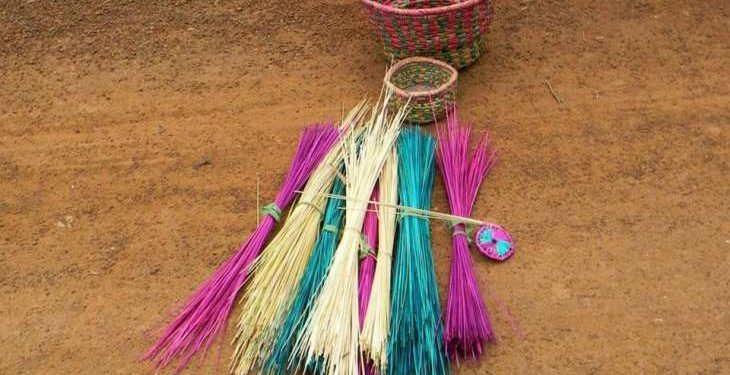Chandbali: Kaincha artefacts are fast disappearing from the market especially at meena bazaars and puja bazaars, thanks to the wide use of modern farming equipment.
Kaincha is the stem of bena, a type of wild grass. In Odisha, the tradition of making artefacts from these stems goes back to ancient times. Once it was a cottage industry when almost all members of a family could be found engaged in preparing various articles required for social rituals. They were also used as modern lifestyle accessories.
The bena grass grows well on the bunds of farming lands. During the festive season, their undulating blooming stems fascinate one and all. During the Odia month of Aswin, the stems ripen for harvesting.
Earlier, farmers used to collect the stems and their womenfolk would process them and prepare various accessories for home needs. These included attractive hand fans, flower baskets, jewellery boxes, etc. using bright colours like red, blue, yellow and green.
Because of their immunity to white ants and other insects, kaincha articles last long. It is for this feature and attractiveness the products are still high in demand.
Though the artefacts are very much in demand, the raw material is no longer as easily available as in the past. “Earlier kaincha stems were available aplenty. But now they have become rare. The disappearance of this grass is only due to rampant use of tractors and power tillers,” says Bhaskar Bera, a farmer of Badasinghapur village in Chandbali area.
Some Bangladeshi refugees were seen in Chandbali area earning their livelihood from selling kaincha articles for some years. They are important during marriages and in social festivals. These are still needed in such festivals. Those who have preserved these articles in their houses regard them as valued possessions.
Neelendri Samal, a farmer of Chasakhanda village, says, “kaincha had been a part and parcel of village peasant culture. The wide use of modern farming equipment, pesticides and medicines to get rid of grass from the farmlands has proved a bane for kaincha. Kaincha-based cottage industry is on the verge of extinction, but no steps have so far been taken for its revival. Cultivation of bena employing scientific techniques is the only way to keep the cottage industry alive,” he adds.
Assistant agriculture officer Udaybhanu Sahoo has admitted that the use of tractors, power tillers, modern equipment, pesticides and weed control medicines cause disappearance of bena grass. Today, if kaincha products are adjudged rarest of the rare, it is only because of the scarcity of the raw material, he said.
PNN







































